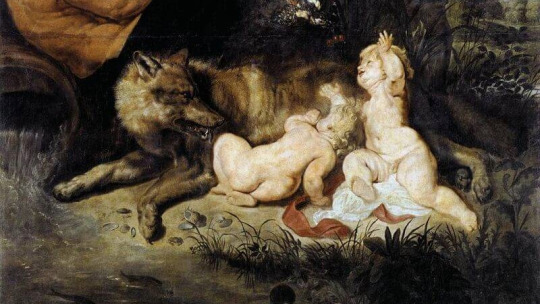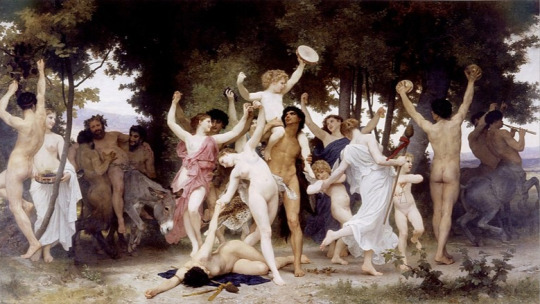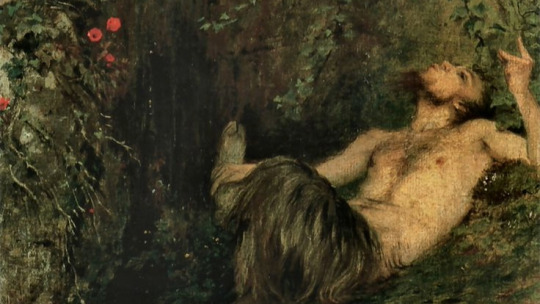#latin eros
Explore tagged Tumblr posts
Text





Lamborghini Coatl/Eros 2000, 2000. During Chrysler's ownership of Lamborghini the rights to the Lamborghini name in South America were sold to Robert A. Braner, president of Automobili Lamborghini USA, and then head of head of Automobili Lamborghini S.P.A, Michael J. Kimberly. The Coatl was a heavily modified Diablo with a 6.3 litre V12 that was to be built for the Latin American market however after the Volkswagen Group took over Lamborghini the project was shelved.
#Lamborghini#Lamborghini Coatl#Lamborghini Eros 2000#prototype#one-off#design study#Lamborghini Diablo#2000#Latin America#South America#V12#mid-engine
238 notes
·
View notes
Text

📸snap a photo: qui ritratto In "ciao maschio' 1978.
Sono stato tutti, ma volevo essere "Tarzan".
Si lo so, vi sembrerà un po' folle. Quando sceglieva un ruolo, era istinto, spontaneità, sarcasmo, genialità, innovazione, inventiva. Ha indossato oltre 160 vite, tutte diverse, tutte normali o quasi. La sua predilezione ? il mediocre, "l'eroe proletario", l'anti-eroe inetto. Tarzan! appunto, per Marcello era la perfetta figura, sarcasticamente umoristica di quell'essere "nessuno". Lo immaginava confinato su un albero, ma da anziano, con tanto di decadimento psicofisico e gonnellino. Sense of humor, voto 10. Stipulata la pagella, pensiamo bene alla retoricità che ne comporta questa sua fantasia, si perché, di fantasia si tratta. Lui, che a scrollarsi di dosso l' appiccicosa etichetta di latin lover ha fatto fatica, a 70 anni suonati, ancora così etichettato, immaginava di essere un Tarzan limitato, privo di muscoli, poco virile nell'aspetto, e magari anche un po' pigro. Desiderava che fosse eroe, e anti eroe, uomo e anti-uomo. Proiettava su immagine, seppur fantastica, la versione di un uomo anziano, eroe decaduto, vessillo di inettitudine che la società repelle, ma che dall'alto, sarebbe stato a guardare, senza troppa fatica, magari annoiato, le inezie altrui, inetto come era, anche lui. Una minuscola lucciola umana, virtuoso faro di coscienze. Si sa, gli eroi sono una moda, gli anti-eroi sono immortali. Marcello, strizzava l'occhio a quell' eroe che di super poteri non ne aveva, ad un eroe di cui, non si sarebbe ricordato più nessuno.

#marcello mastroianni#mastroianni marcello gif#film photography#movies#best actor#moviegifs#federico fellini#original photographers#kodak#latin lover#tarzan#eroe#marvel heroes#anti hero#tumbrl#telefonamitra20anni#ciao#160vite#cinecittà#classic cinema#italian cinema#cinema#cinestill#cinemetography#telefonami tra vent'anni
13 notes
·
View notes
Text
Dude, if you’re gonna post Mario Hervas, why don’t you say Mario Hervas?!?
ما��يو ارواس

#mario hervas#ultimate muscle worship#ultimate narcissism#ultimate sex machine#ultimate male#towel model#men in towels#latino muscle worship#lusty latino#latin eros
606 notes
·
View notes
Text
sic ignara Psyche sponte in Amoris incidit amorem
#latin language#literature#art#eros and psyche#bookblr#dark academia#writeblr#writing#book quotes#aesthetic#overthinking#girl crying#2014 core#2014 tumblr#2014 vibes#i miss 2014#books & libraries#life#old tumblr#phrases#philosophy#poem#poetry#poets on tumblr#artists on tumblr#old art#latin girls#girlblogging#tumblr girls#mindfuck
4 notes
·
View notes
Text
એમ્માનુએલ આલ્વ્રેસ। ૨૩૦૭૦૧
Liquor loosens lips,
also unzips…


#emmanuelalvarez#cubanflexx#power men#latin eros#latino muscle worship#specs and muscle#specs and pecs#spec seduction#spectacular seduction#the power of seduction
1K notes
·
View notes
Text

chat what do we think
#haki talks#yippie!! first time posting my art on tumblr dot com#so this is my oc :] he’s from my book#um#my ocs#also the text is blurry as hell probably because i tried to edit it you could see it better#i failed at that#very proud of the face i drew tho#my art#this is son number 1 there’s another one who’s name is eros (yes the greek name for cupid) and amante (derived from “amantis” which is#latin for lover)#debating whether to post the chapters on here#writers block has me in a chokehold as of now though#who knows#ok i’ll stop yapping now
0 notes
Text
𝐋𝐮𝐩𝐞𝐫𝐜𝐚𝐥𝐢𝐚




What is Lupercalia?
Celebrated on February 13th - February 15th, Lupercalia was an ancient Roman holiday dedicated to the god Faunus, the wild horned spirit of nature, and the legendary founders of Rome, Romulus and Remus. The festival is believed to have far more ancient origins than its association with these mythical figures, likely stemming from earlier fertility rites and purification ceremonies.
The name of the festival, Lupercalia, is derived from the Latin word lupus (wolf), tying it to the legend of the she-wolf who rescued and nursed Romulus and Remus in the cave known as the Lupercal. This cave, located on Palatine Hill, became the heart of the festival’s rituals, emphasizing the protective and nurturing symbolism of wolves.
At its core, Lupercalia celebrated the themes of fertility, purification, and the harmony of nature. It honored two deities: Faunus, the primordial spirit of wild nature and fertility, and Juno Februata, the aspect of Juno associated with purification and the passions of love. The name "February" itself originates from Februare (to cleanse) and Juno Februata, underscoring the month’s ties to this festival.
The festival began with sacrifices of goats, symbolizing fertility, and dogs, representing purification. These sacrifices were followed by ceremonial rituals performed by Faunus’ priests, known as the Luperci. After consuming the sacrificial meat, the Luperci smeared themselves with the blood of the animals and dressed in strips of goatskin, referred to as "Juno’s cloak." They then ran through the streets of the Palatine Hill, carrying whips made from goatskin called februa.
Women who wished to conceive strategically positioned themselves to be struck by the whips, believing this act would enhance fertility, ensure conception, and guarantee safe childbirth. This ritual also served as a broader purification rite for the community, cleansing it in preparation for the coming New Year, which in the Roman calendar began at the vernal equinox.
The nine days of Lupercalia, from February 13th to the 21st, were believed to be a liminal time when the souls of the dead wandered the earth. Offerings of food and drink were left for them, with the living honoring the spirits as part of the festival's traditions.
Over time, the festival's elements shifted and evolved, blending with other traditions. February 14th, now celebrated as Valentine’s Day, originally marked the first day of Lupercalia, dedicated to Juno Februata and Faunus, when women prayed for fertility and blessings.
Lupercalia continued to be celebrated for centuries until it was officially abolished in 495 AD by Pope Gelasius I, who replaced it with a Christian feast day. Now, in modern times, even though Lupercalia is no longer a widely celebrated festival, it is often associated with modern Valentine’s Day or even a celebration of self-love. Today, it’s all about love, fertility, and connection. You can spend the three days of Lupercalia by offering yourself love and understanding, doing things that nurture your self-appreciation, and spending special time with your loved ones.
⠂⠄⠄⠂⠁⠁⠂⠄⠄⠂⠁⠁⠂⠄⠄⠂⠄⠄⠂⠂⠄⠄⠂⠁⠁⠂⠄⠄⠂⠁⠁
Magic Correspondences:
Colors: red, white, pink
Crystals: rose quartz, milky quartz, selenite, moonstone, ruby, garnet, lepidolite, green aventurine, emerald
Deities: Juno, Lupercus, Faunus, Venus, Aphrodite, Pan, Hera, Dionysus, Eros, Freyja, Cernunnos (deities associated with love, fertility, and abundance)
Animals: dog, goat, wolf, dove, swan, dolphin, ladybug, lovebirds, horse
Flowers: lavender, roses, snowdrops, hyacinths, tulips, orchids
Herbs: cinnamon, basil, jasmine, vanilla
Fruits: figs, cherries, grapes, bananas, strawberries, pomegranate, raspberries, apples
Symbols: phallus, hearts, wolves, whips, goat
Magick: fertility and abundance spells, self-love magick, sex magick, purification
⠂⠄⠄⠂⠁⠁⠂⠄⠄⠂⠁⠁⠂⠄⠄⠂⠄⠄⠂⠂⠄⠄⠂⠁⠁⠂⠄⠄⠂⠁⠁
Activities to do:
🐺 Take a relaxing long bath, and add some rose essential oil if you like
🐺 Spend time with your dog(s)
🐺 Watch some romance movies
🐺 Treat yourself to things that make you feel good, like lotions, perfume, or new clothes
🐺 Light red, pink, or white candles
🐺 Collect flowers and put them in your altar or room
🐺 Drink goat milk
🐺 Perform love, fertility, and purification spells
🐺 Give flowers to loved ones
🐺 Spend some time in your home, simply being naked because why not?
🐺 Bake heart-shaped cakes
🐺 Support dog shelters with a donation
🐺 Spend time with your lover
🐺 Listen to your favorite music
🐺 Show appreciation for your body
🐺 Take your health medicine
🐺 Decorate your space or altar with heart-shaped objects
🐺 Spend time and meditate in nature
🐺 Eat lots of chocolate
🐺 Practice yoga
🐺 Connect with deities associated with love, fertility, and purification
🐺 Drink some red wine
🐺 Dedicate a day to self-care, doing what feels healthy and good for you
⠂⠄⠄⠂⠁⠁⠂⠄⠄⠂⠁⠁⠂⠄⠄⠂⠄⠄⠂⠂⠄⠄⠂⠁⠁⠂⠄⠄⠂⠁⠁
Food and Drinks:
Drink red liquids like wine, cranberry or strawberry juice, consume goat dairy, cakes, muffins, chocolate, honey, cherries, champagne, grapes, hazelnuts, cinnamon rolls, cupcakes, any food with meat, apple pie, strawberries.
⠂⠄⠄⠂⠁⠁⠂⠄⠄⠂⠁⠁⠂⠄⠄⠂⠄⠄⠂⠂⠄⠄⠂⠁⠁⠂⠄⠄⠂⠁⠁
sources: Wicca: A Modern Guide To Witchcraft & Magick; Encyclopedia of Witchcraft: The Complete A-Z for the Entire Magical World by Judika Illes
#paganism#hellenic polytheism#deity work#hellenic pagan#roman mythology#lupercalia#valentine's day#witchy#witch#witches#witchcraft#eclectic pagan#hellenic paganism#pagans#pagan#pagan witch#paganblr#imbolc#candlemas#magic#magick#witchblr#deity worship#witch community#witchcore#tarot#wicca#wiccan#hellenism#hellenic
276 notes
·
View notes
Text
Eros Ramazzotti - Più Bella Cosa 1996
"Più Bella Cosa" (The Most Beautiful Thing) is a song by Eros Ramazzotti in February 1996, as a first single and pre-release from his seventh studio album Dove c'è musica that came out on May 13 of that year. It was written by Ramazzotti, Claudio Guidetti, Maurizio Fabrizio and Adelio Cogliati, and is dedicated to the Swiss model Michelle Hunziker, Ramazotti's girlfriend at the time. The music video was directed by Nigel Dick, featuring Ramazzotti and Hunziker. At Festivalbar, the song won the "Best Song" award and the album won the "Best Album" award.
As is traditional with many other successful releases of Ramazzotti's, he released a Spanish language parallel song for Spain, Latin America and US Latin markets titled "La Cosa Más Bella". That version appears in the parallel Spanish-language version to the album Dove c'è musica retitled Donde hay música. It peaked at number two on the Hot Latin Songs chart and number one on the Latin Pop Songs chart in the US.
"Più Bella Cosa" received a total of 55,1% yes votes.
youtube
551 notes
·
View notes
Text
More European Renaissance Art Vocabulary

for your next poem/story
Halo - The gold circle or disk placed behind the heads of Christ and saints, a symbol of their sanctity or the light of God.
Hatching - The drawing or engraving of fine parallel lines to show shading. When the lines intersect each other, it is called cross-hatching.
Horizon Line - The line where the sky and earth appear to meet. The horizon line is drawn across the picture at the artist’s eye level.
Hue - A particular variety of a color, shade, or tint.
Lunette - A semicircular shape.
Magus - A member of the ancient Persian priestly caste, skilled in Eastern magic and astrology. In the New Testament, the Magi are the three wise men who came from the East to pay homage to the newborn Christ Child.
Majolica - Tin-glazed earthenware.
Palazzo - An Italian word used to describe a large building. It may be a mansion or palace, or an official government building like a town hall, court, or embassy.
Passion, or The Passion of Christ - The events surrounding the Crucifixion of Christ; a popular subject for religious drama, painting, and sculpture.
Perspective - A technique that artists use to represent the three dimensional world on a two-dimensional surface, such as a piece of paper, canvas, or wood panel. Using perspective, an artist can create the illusion of depth or space and show the proper proportion between objects. Without perspective, a painting or drawing will appear flat.
Pictorial Space - The illusion of three-dimensional space created on a two-dimensional surface.
Predella - An Italian word for the series of small paintings that form the lower section of large altarpieces. It usually has narrative scenes from the lives of the saints who are represented on the main and side panels of the altarpiece.
Putto - From the Latin word meaning “male child.” In 15th- and 16th century poetry and painting, putti are depicted with wings and connected with the god of love, Eros, also known as Cupid.
Red - In Christian paintings, a symbol of the blood of Christ or the Passion.
Relief - A raised surface; for example, sculpture that is carved or modeled and which projects from a background.
Star - In Christian paintings, a symbol of divine guidance or favor. The Star of the East guided the three Magi to Bethlehem.
Triumph - An ancient Roman tradition honoring the return of a victorious general, who paraded his soldiers, prisoners, and spoils through the city streets.
Tromp L’oeil - French for “fool the eye”; a style of painting intended to trick the viewer into believing that the minutely observed objects shown are part of the viewer’s three-dimensional world.
Vanishing Point - The point where parallel lines appear to meet on the horizon line.
Source ⚜ More: Word Lists ⚜ Part 1
#renaissance#art#terminology#writing inspiration#writeblr#dark academia#writing reference#langblr#spilled ink#creative writing#light academia#literature#writers on tumblr#poets on tumblr#writing prompt#poetry#art reference#michelangelo#writing resources
220 notes
·
View notes
Note
Lovecore mascneu names? If it's not too much trouble! It's hard to find lovecore names that aren't fem.
Terribly sorry this list is not that long. We still hope you enjoy. ^^ (many are Latin ! :3)
♡ love
♡ lovebug
♡ lover
♡ lovern
♡ eros
♡ bowie
♡ bowen
♡ angel
♡ Angelo
♡ lev
♡ luv
♡ Romeo
♡ desire
♡ amor
♡ adore
♡ Valentine
♡ Val
♡ lovey
♡ rosen
♡ dove
♡ doveril
♡ affectio
♡ pectus
♡ roseus
♡ amos
♡ adfectus
♡ affectus
♡ dilectio
♡ caritas
♡ searc
♡ Hart
♡ lovenhart
♡ rosethorn
♡ Valentino
♡ cupid
We hope you like if not you can always request and we apologize for the wait - 💜/🐇
#<3#name ideas#name help#name suggestions#aesthetic names#character name inspiration#character names#name blog#names#name list#boy names#baby names#androgynous names#andro names#beautiful names#character name#character name ideas#enby names#gender neutral names#genderfluid names#list of names#male name#masc name help#masc names#masculine names#name change#name inspiration#name lists#name hoarder#name hoard
165 notes
·
View notes
Photo

Psyche
Psyche was the goddess of the soul in ancient Greek and Roman mythology. Born a mortal woman, her beauty rivaled that of Aphrodite (Venus) and inspired the love of Aphrodite's son, Eros, god of desire. After completing a series of seemingly impossible tasks to be with Eros, Psyche was granted immortality and made into a goddess herself.
Although the story of Psyche and Eros (Cupid) can be found depicted in Greek art dating back to the 4th century BCE, the most famous and complete telling of the myth is found in ancient Roman literature, in the 2nd-century CE novel Metamorphoses, or The Golden Ass, written by Apuleius.
Origins in Apuleius’ Metamorphoses
Metamorphoses is the only ancient Roman novel written in Latin to still survive in its entirety. Written in the 2nd century CE by Apuleius, a writer and philosopher from the Roman province of Numidia, the Metamorphoses, also known as The Golden Ass, consists of eleven books.
It follows the story of Lucius, a man whose desire to see and practice magic leads him to accidentally transform himself into a donkey. This sets Lucius out on his journey, during which he hears many stories. One of these is the tale of Cupid and Psyche, which is told in full. Apuleius dedicates books four through six of The Golden Ass to this tale. Although there is evidence of the story of Cupid and Psyche appearing in Greek artwork as far back as the 4th century BCE, it is through Apuleius' inclusion of the story in his novel that the details come down to modern readers and scholars.
Continue reading...
60 notes
·
View notes
Note
how did you come to have a wider actively-used-in-speech(=writing) English vocabulary than a native speaker? how do we ascend to your level? i open a book, and its language is plainer, artlesser.
Have i ascended or have i dug... and does it make any difference as long as you keep moving... well You're gonna have to read More books. Other books. I'm Sorry. Nonfiction as well often. Or stuff published before 1940. My favorite nonfiction books are those about language (and the crowd is not surprised). I've found a great deal of meaningfulness in Anne Carson's "Eros the Bittersweet" for as starting, central and pivotal point of it is the fact that Sappho's Eros is NOT bitter-sweet, but very much sweet-bitter, and this order of adjectives is crucial to understanding the ancient concept of Eros -> this is a book fundamentally which makes you understand sometimes you have to Make Up A Word. And brother I love making up a word.
Other things that could possibly help :
if you know another language, read stuff in it. Find words you find l(o/i)vely and write them down and see what they look like in English/your target language , and see if anything approaches it.
Read older translation of foreign theatre/poetry. I'm quite partial to Greek tragedies rn.
Read older poetry in a language you know
Now one can go overboard with this, but look at synonyms. I love a synonym. I am not insensitive to a synonym. BUTTT before using it you have to see if you truly, fully understand it. if choosing it makes more sense, makes a better sound, a better flow, a better image depending on what you're prioritizing when writing. You have to strip the word you originally had to its bones-meaning and see if a synonym fits better as flesh around that meaning. If it doesn't, do NOT try to push it. it is meaning you need to grasp.
Speaking of stripping to the bones-meaning : get into etymology. Or at least find some sort of fun in it. Etymology is the bone. It's the marrow.
get into new things/subjects and collect words from them.
^ related to above: keep a list of words you find and you like. With their meaning. I have such a list. I'll show you some of my favorite words from it to see what I mean with these last two points :
Porphyre (french, geology) type of colorful stone. found in the context of sculpture.
Protomé (french, art/art history) depiction of the front of an animal if human. found in the context of archeology.
Fasciation (english, botany) malformation of plants. found in its context.
Stria, striæ (english, geology/mineralogy) parallel lines in rock of crystal. found in its context.
Spinescent (english, botany) bearing spines. found looking for a synonym.
Isthmus (latin usual name in english, anatomy) constriction between organs. found in the context of geography, where it is used for a constriction between two stretches of land.
Acantharea (latin scientific name, marine biology) group of marine microplantkon. found looking up stuff from Ernst Haeckel's Kunstformen Der Natur because I use a lot of his pieces from it as reference when I pit peter and stakh in some kind of damp situation.
Acanthus (latin usual name in english, botany) acanthus plants or architectural ornament resembling them. found in french reading Hyusmans' À Rebours (1884) ("Against nature" in english) and written down because I liked it (among many others. read À Rebours/Against Nature if you want to find yourself a treasure trove of language And to find yourself wanting to beat the main character, whose head you're trapped in for the whole book, to death. one of my faves tbh)
You get what I mean? You gotta stay curious. You gotta facilitate yourself finding new way to handle the language by reading more and more different stuff. it's a whole lot of looking for words, and when they don't sound or look or feel or behave good/well enough, stripping them down to the bone-meaning (carcass) and see through curiosity if there exists another flesh to meat them up with. You don't get to stop reading, because very rarely will a word come fully formed, shape orthography function declension meaning, directly inside of your mind. It comes through your eyes or sometimes your ears first. If you don’t find good words/good language in the book you’re reading, you're gonna have to read other books, because they’re where the words are. you cannot have read every book on earth and elsewhere in which language is plain and artless everytime. so you gotta keep reading 🫵 you might find only a handful of good, new, tasty words in a book. but you'll have found them. And it matters
33 notes
·
View notes
Text

͟ຼ͟ ͟ ͟ㅤ ♫ ♱ 🪽 OPALITE also known as THE OPALESCENT ETERNAL LIGHT , is a fictional five membered k-pop girl group managed by Hyacinth Records. The group consists of members MYRA, JULY, LEILA, VALENTINE, and SELENE.
Birthed from the project A NEW BIRTH , a nine membered group full of strongest trainees in the company. A New Birth consisted of (now) debuted groups ANTOINETTE, NAIA, and BRUIXA. Trainee ISADORA KIM, leader of pre-disbanded Bluebell, was outed for bullying trainees for the duration of her two year trainee period.
Their debut was immediate. No teasers, no formal introductions just Opalite's debut song on their Youtube. To say the least, the members were not prepared. Up until now, they've all trained separately so the group dynamic was awkward to say the least. Stepping up to the plate, MYA was the member to pull the group together and polish their acts.
The video was released into the public on JUNE 9, 2022 originally for Hyacinth's upcoming group ANTOINETTE, but RINA and newly appointed creator director LEE EUN-HYE decided this was perfect. Later on that week, it was announced that Opalite's debut mini album HUMAN PSYCHE would be released that month.
The girls immediately stood out, their mysterious concept contrasting the nostalgic, pure act of Bluebell.
Sonically, the music of Opalite is split into their two respective concepts : EROS EMBRACE is a celestial, serene sound paired with Shoegaze, UK garage, New Jack Swing, while TEN OF SWORDS is concise in it's influences of dark EDM, R&B, and deep house.
Today, Opalite has a rapidly growing fanbase. They have a unique, dedicated following, especially among fans who appreciate more narrative-driven concepts within groups. Familiarizing themselves with strong, consistent releases and intricate lore, Opalite has the potential to become a household name.

♫ COMPANY. Hyancinth Records
♫ GROUP NAME. OPALITE
♫ CONCEPT. Dual concept. Mythological. Angelic. Guardian angels. Psychological.
♫ FANDOM. LUMOS (Derived from Latin word “lumen” meaning light)
♫ FANDOM COLOR. OPAL BLUE (#6EC1E4) LOOK FOR THE LIGHT (#F8F9FA)
♫ GREETING. “Be not afraid! Hello, we are Opalite!”
♫ MEMBERS.

1.) KANG MYRA JIYEON. 2.) HWANG JULY SEOBIN. 3.) PARK LEILA SIEUN. 4.) CHOI VALENTINE YIHYUN. 5.) ANNO SELENE TSUKIKO

#യ (🪽) ꙳ Be Not Afraid ╲ Profile.#ficnetfairy#fictional idol community#fictional idol addition#fictional idol group#seventeen addition#fake idol community#idolverse#fake idol oc#idol oc#fictional idol oc#bts addition#kpop idol#fictional idol company#idol girl group#idol au#idol!au#idol!oc
51 notes
·
View notes
Text
The symbolism of everything associated with Elain 🌹

(by rinamoart)
_Roses
In Roman mythology, roses, known as the queen of flowers, were created by Flora, the goddess of flowers and spring. After the death of her favorite nymph, Flora transformed her into a rose. Aphrodite added beauty to it, Dionysus gave it its scent, and Ares provided it with thorns for protection. As a result, the rose became a symbol of pure beauty and rebirth.
In another tale, after the birth of Aphrodite, roses appeared as a symbol of purity and innocence when her feet touched the earth.
In the myth of Eros and Psyche, after he saved her, to celebrate their marriage, Zeus scattered roses all over the Earth as a symbol of love, beauty, and the devotion of soulmates.
_Violets
Violet derives from the Latin word "viola" and is associated with thoughts filled with love. The Greeks and Romans believed that this flower had various medicinal properties. Violets were linked to Aphrodite and were used in love potions, as well as associated with Artemis, symbolizing innocence and modesty. Additionally, violets are seen as a representation of the cycle of death and rebirth. When Hades abducted Persephone, she was picking violets.
_Jasmine and Honey
Jasmine, often referred to as the "queen of the night," means "a gift from God." It is believed to be a symbol of purity, eternal love, beauty, innocence, warmth, and good luck. Jasmine is also associated with rebirth, as it blooms at night and releases its fragrance during darkness, symbolizing the idea of finding light in the midst of darkness. Its sweet and alluring scent is considered an aphrodisiac, believed to evoke feelings of passion and desire.
Honey's scent is also often associated with Aphrodite because of its sweet, feminine, and seductive aroma.
_Amethyst:
Considered as the "stone of new beginnings," is believed to have been worn as a ring by St. Valentine and is closely associated with love. Its color symbolizes wisdom, purity, power, and nobility.
_Ivy:
It is associated with perseverance and determination, as it can climb and cling to surfaces. It represents the endless cycle of life, death, and rebirth, as it persists, regenerates, and remains green throughout the changing seasons. In both Celtic and Greek mythology, it is seen as a symbol of growth, healing, and protection.
_Fawn:
It is associated with the cyclical nature of life and represents innocence, gentleness, and purity. It can also symbolize growth and transformation.
_The sun at dawn:
In Greek mythology, dawn is associated with the goddess Aurora. She rises from a river at the start of each day, riding her chariot across the sky. She is adorned with a purple mantle of stars that unfolds behind her, and she spreads flowers as she passes, announcing the arrival of the sun. Aurora symbolizes love, beauty, healing, and new beginnings. Despite experiencing a great deal of grief, she never chooses hatefulness or revenge; instead, she prefers to spread love, colors, and wisdom. (she's Elain lol)
#elainarcheron#elriel#elain archeron#pro elain#sarahjmaas#pro elriel#azriel acotar#elriel supremacy#acotar thoughts#sjm#art#elain x azriel#elain acotar
247 notes
·
View notes
Text

Patreon Exclusive Art: The Magician Leon
Posted these on patreon over a year ago, and if you encounter me on the street, you probably got one of the tarot cards as my official TWP business card.
Leon takes on a more modern take of the magician, being more of a stage magician, an homage to my love of slight of hand tricks I used to do as a kid.
The Magician represents new beginnings, mental growth, and self awareness. It is ruled by the planet Mercury and the element of air. The phrase in the reverse position is Ero, which is Latin for "I will".
Art & Character © Sorbet Mystery
There will be prints and a full deck here soon!
Check out more Exclusive Art, including the next batch of tarot cards here: https://patreon.com/thewerewolfprince?utm_medium=unknown&utm_source=join_link&utm_campaign=creatorshare_creator&utm_content=copyLink
#sorbet mystery#wolficorn studios#artists on tumblr#furry art#sfw furry#gay art#furry artist#digital artist#lgbtq artist#tarotblr#tarot cards#the werewolf prince#werewolf prince#lgbtq comic#werewolf#gay artist#werewolves#werewolf art#werewolf wednesday#werewolf transformation#ocs#oc#oc art#my ocs#original character#digital art#my art#drawing#illustrations#illustration
24 notes
·
View notes
Text

Psyche
Artist: Alexandre Cabanel (French, 1823 – 1889)
Original TItle: Original Title: Psyché
Genre: Mythological Painting
Style: Style: Academicism
Date: 1881
Medium: Oil on Canvas
Collection: Private Collection
Psyche is the Greek goddess of the soul and often represented as a beautiful woman with butterfly wings. The name Psyche means "soul" in Greek and was commonly referred to as such in Roman mythology as well, though the direct translation is Anima (Latin word for "soul"). She was born a mortal woman and eventually granted immortality, with beauty that rivaled even Aphrodite, goddess of love. Psyche is known from the novel The Golden Ass, also known as Metamorphoses, written by the Roman philosopher and orator Apuleius in the 2nd century. In the myth, she was given multiple trials to be with her beloved, Eros, also known as Cupid, god of physical love and desire and son of Aphrodite. The cultural influences of Psyche's story can be depicted in art dating back to the 4th century BCE.
#mythological painting#19th century painting#alexandre cabanel#french painter#greek goddess#greek mythology#goddess of the soul#landscape#trees#mountains#wings#golden box#greek gown#beauty#aesthetic
41 notes
·
View notes